Economy

Indicators Positive for U.S. Manufacturing
Written by Peter Wright
October 12, 2018
Economic indicators of manufacturing activity remain strong. This report summarizes 10 data sources that describe the state of manufacturing in the United States. We have reported on most of these separately and therefore will be brief in this summary. We don’t expect these data sources to all point in the same direction. Our intent in summarizing them in one document is to provide a consensus of the state of this critical steel-consuming sector. Based on American Iron and Steel Institute estimates of steel mill shipments by market classification, almost 50 percent of the steel consumed in the U.S. is manufacturing-oriented. This breaks down to about 27 percent in ground transportation, 9 percent in machinery and equipment, 5 percent in appliances, 4 percent in defense and about 4 percent in containers.
The Industrial Production Index
Figure 1 shows the IP index since January 2007 with the year-over-year growth. The three-month moving average (3MMA) is shown by the brown bars in Figure 1. March 2017 was the first month of positive growth in the 3MMA since April 2015. Growth has been above 3 percent every month since February, reaching 3.7 percent in August. Manufacturing capacity utilization improved from 74.48 percent in January last year to 75.7 percent in August 2018 on a 3MMA basis.
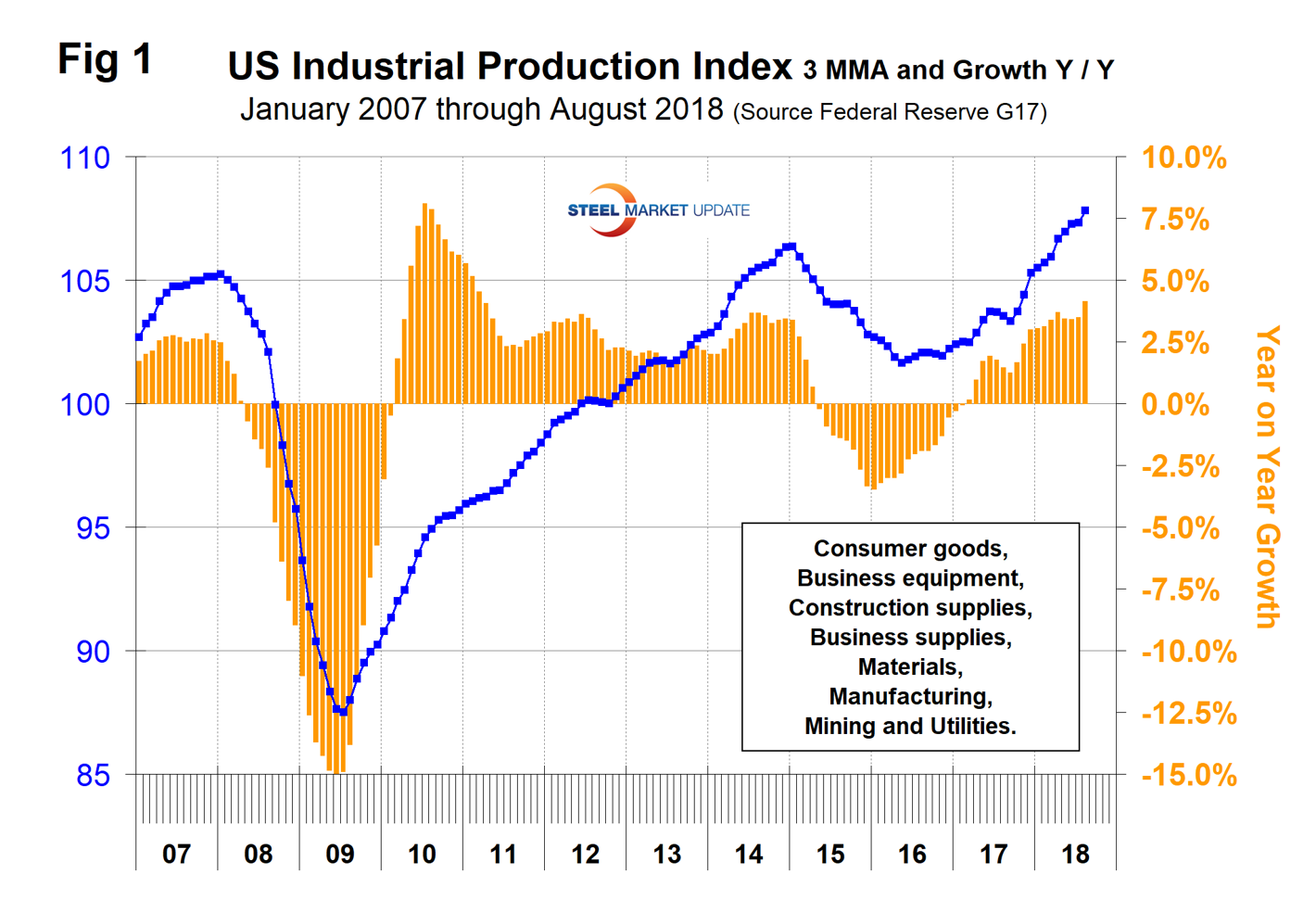
U.S. Factory Orders
U.S. factory orders reported by the Census Bureau have been steadily increasing since mid-2016. In August, year-over-year growth was 10.0 percent (Figure 2).
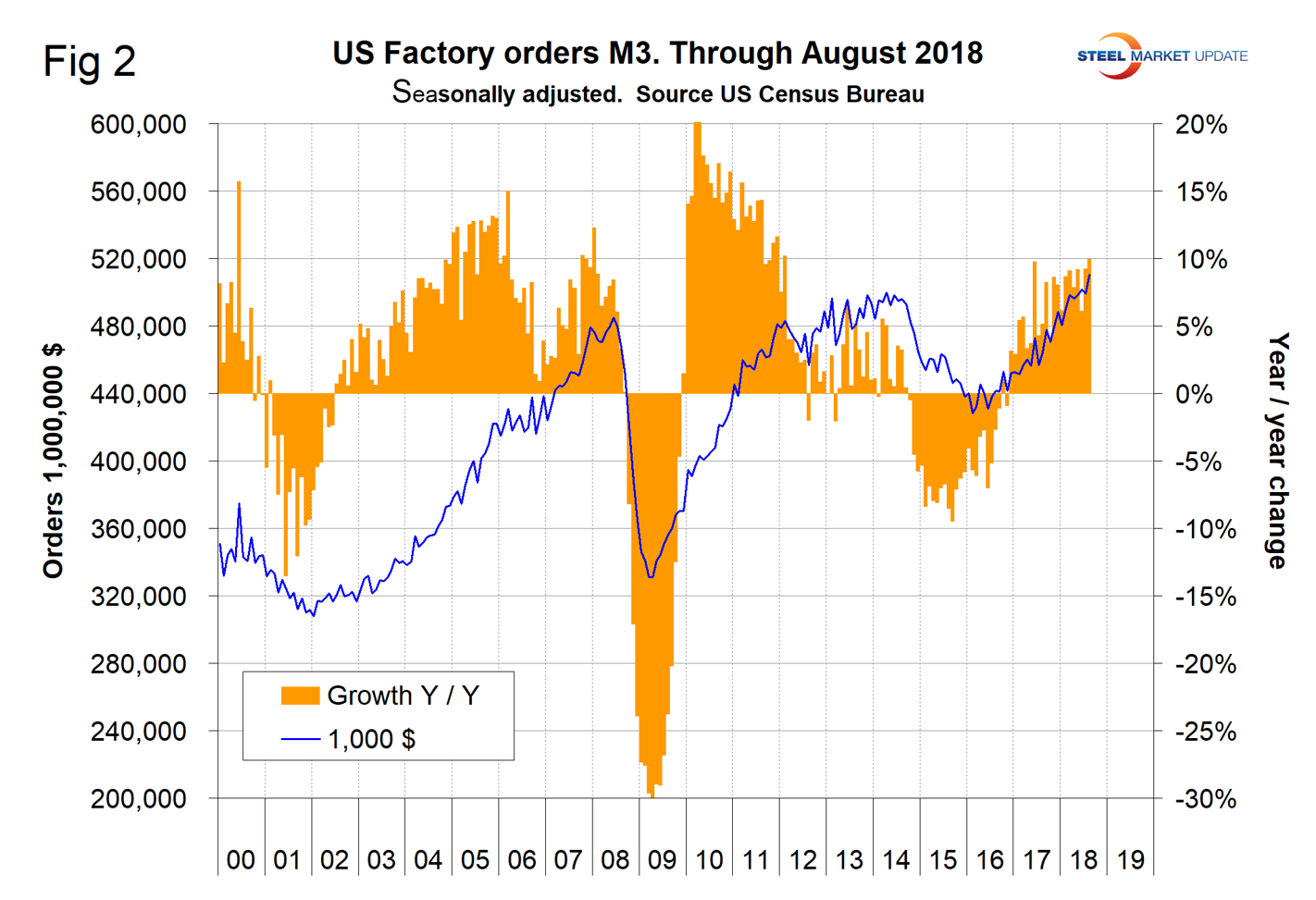
Within the Census Bureau’s M3 manufacturing survey is a subsection for new orders for Iron and Steel Products. Figure 3 shows the history since January 2000 with an excellent growth rate of 15.8 percent year over year for August.
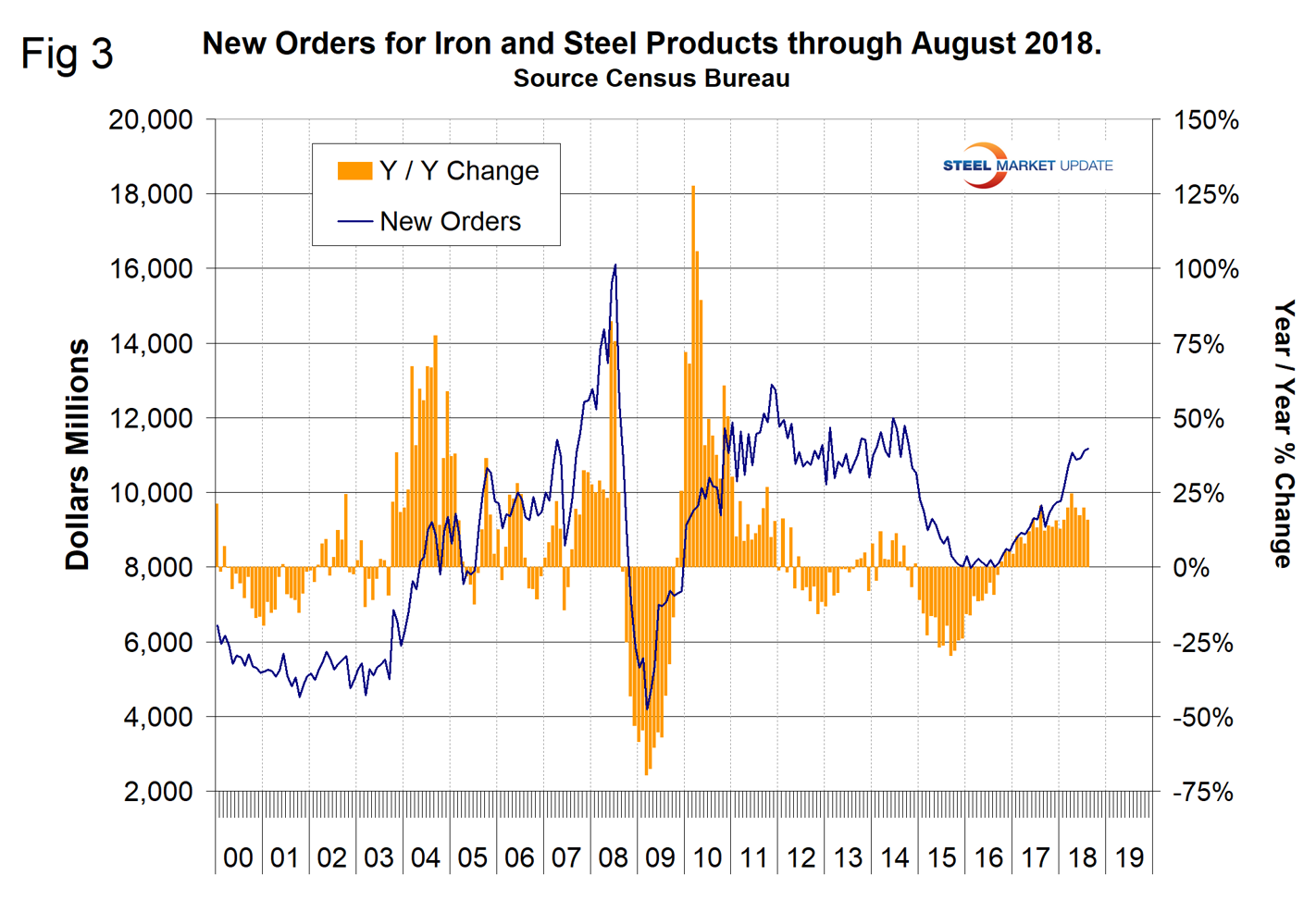
New Orders for Durable Goods
The U.S. Census Bureau announced last week that new orders for manufactured durable goods in August increased by 1.4 percent on a 3MMA basis month over month and were up by 6.9 percent year over year. Figure 4 shows the 3MMA of monthly orders for durable goods since January 2010 and that the year-over-year improvement in 2018 has been the highest since 2014.
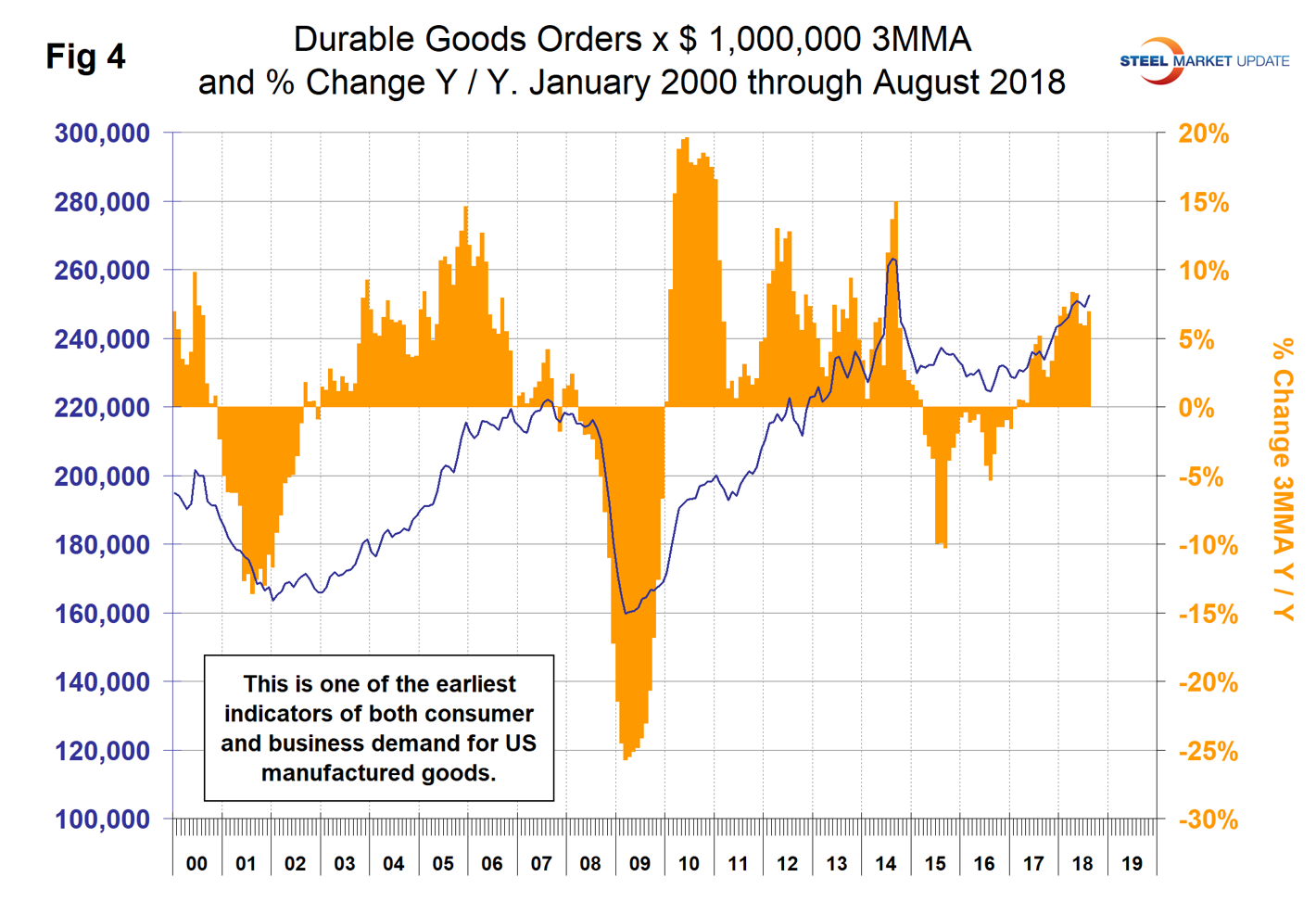
Durable Goods Portion of GDP
The third estimate of Q2 2018 GDP came in at 4.1 percent annualized growth, up from 2.2 percent in Q1 2018. A subcomponent of the quarterly data is durable goods, which is part of the personal consumption calculation. It therefore contains no military hardware or civil aircraft data. This is shown in Figure 5 and, presumably because of the exclusions just mentioned, looks nothing like the blue line in Figure 4. The durable goods portion of GDP declined in Q1 2018, but the long-term trend is still very positive.
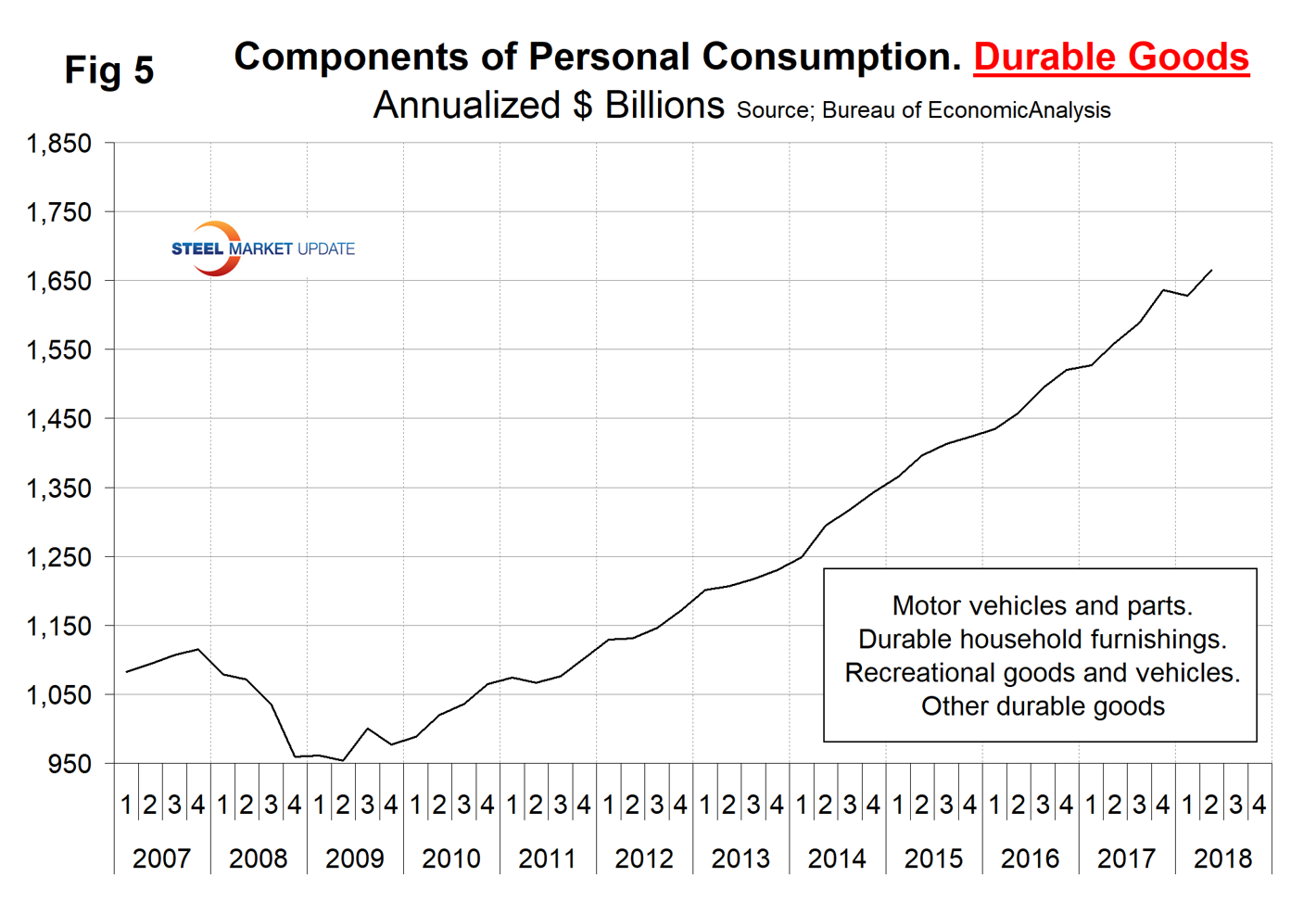
Light Vehicle Sales in the U.S.
Automobile sales have trended down slightly in the last 2 ½ years and in September were down by 0.3 percent year over year on a rolling 12-months basis. Annualized sales in September totaled 17.4 million units, comprised of 69 percent light trucks and 31 percent autos. The light truck category includes SUVs and crossovers. Sales are still higher than the pre-recession level, but only just (Figure 6). Import market share in September was 23.0 percent and has been drifting up since March last year.
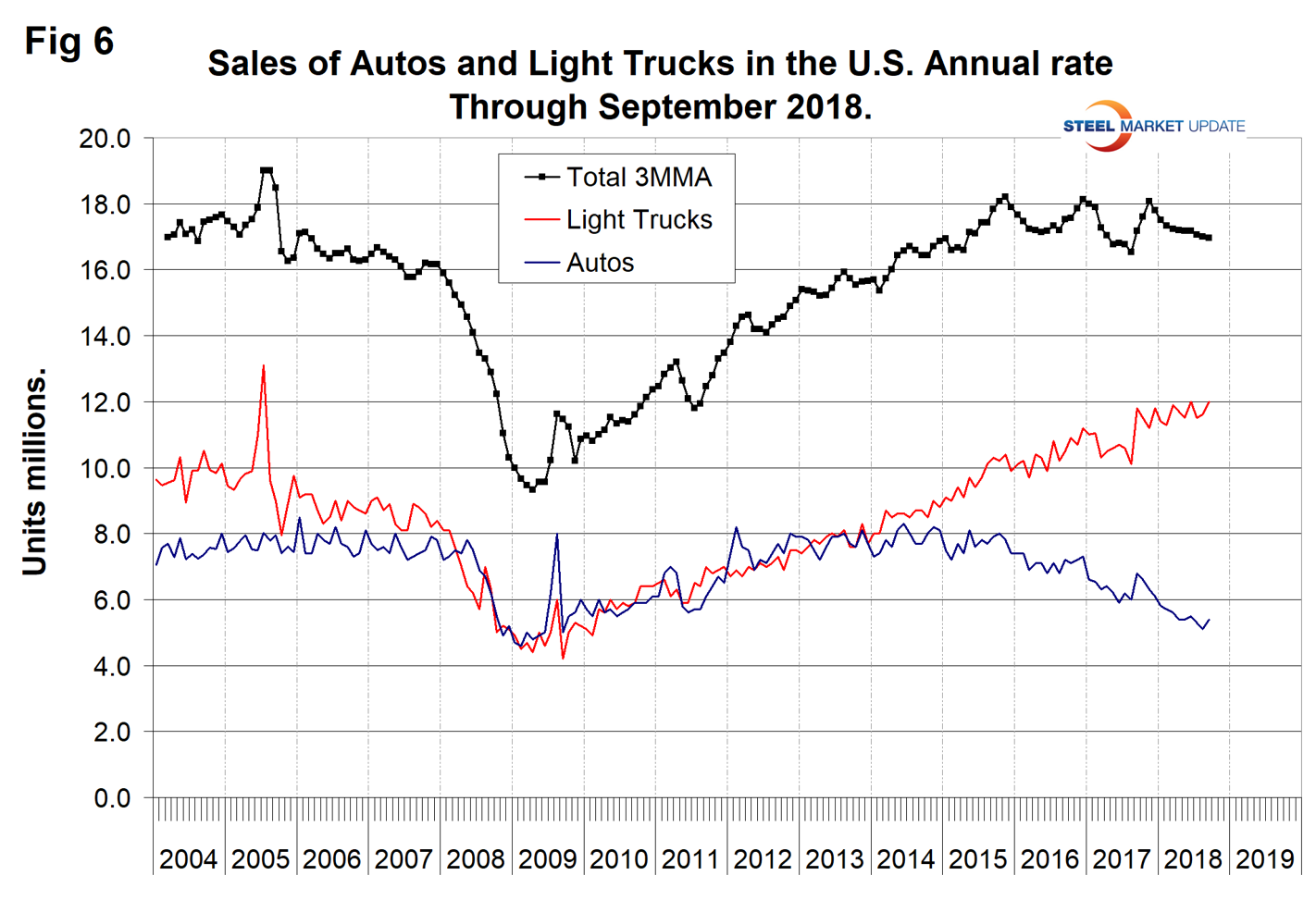
Manufacturing Employment
Manufacturing employment plummeted during the recession and gradually improved from the spring of 2010 through 2014. Growth was flat in 2015 and declined slightly in 2016 when 23,000 jobs were lost during the year as a whole. There was a turnaround in 2017 when 278,000 jobs were created in manufacturing in the 12 months from Oct. 17 through Sept. 18 (Figure 7). The motor vehicles and parts subcomponent of manufacturing employment had a net gain of only 8,000 in the same time frame.
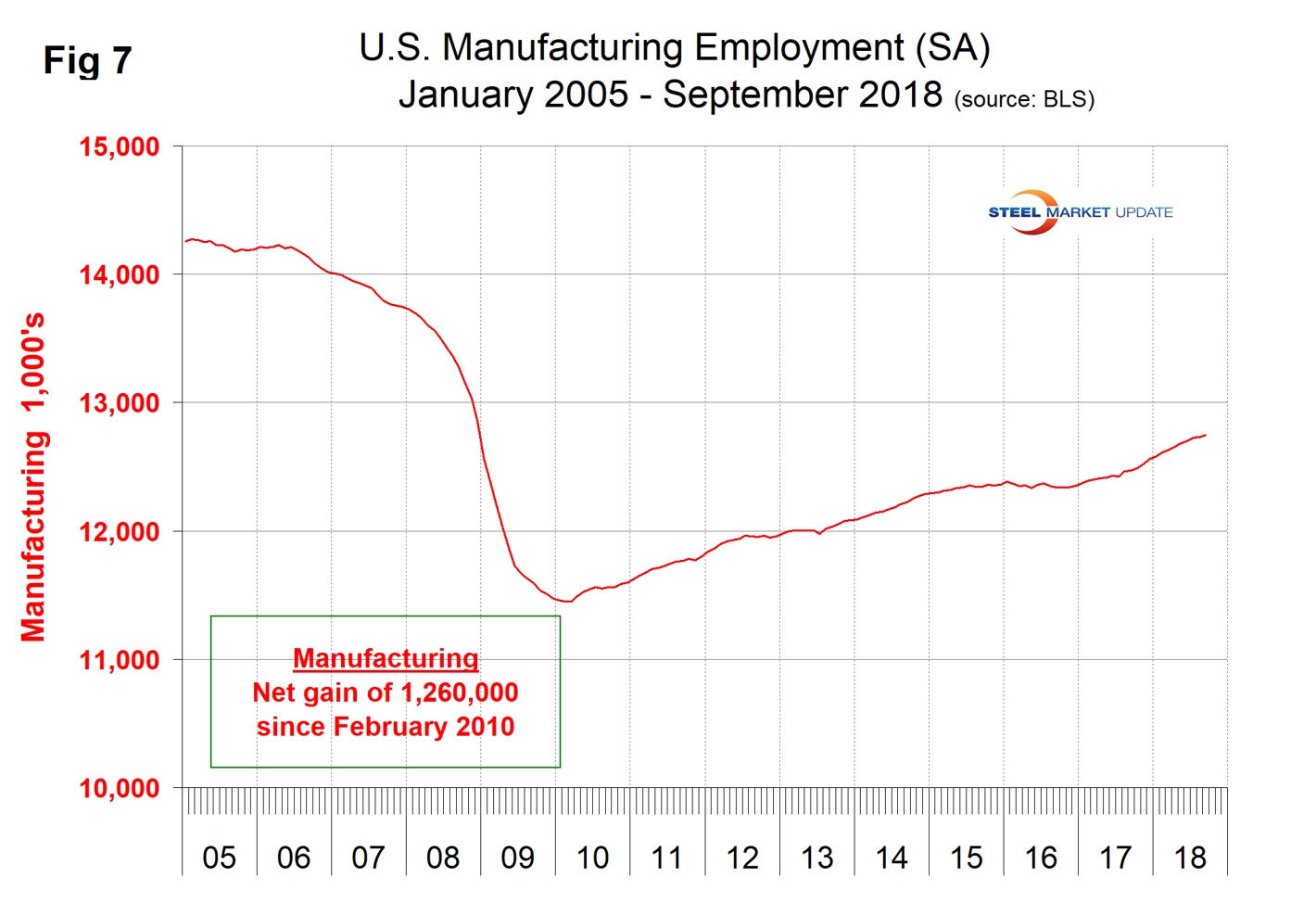
Manufacturing Productivity
The Bureau of Labor Statistics reported that in Q2 2018 manufacturing productivity declined by 0.2 percent year over year (Figure 8). Since third-quarter 2011, manufacturing productivity has had a net contraction of 0.6 percent, according to the BLS.
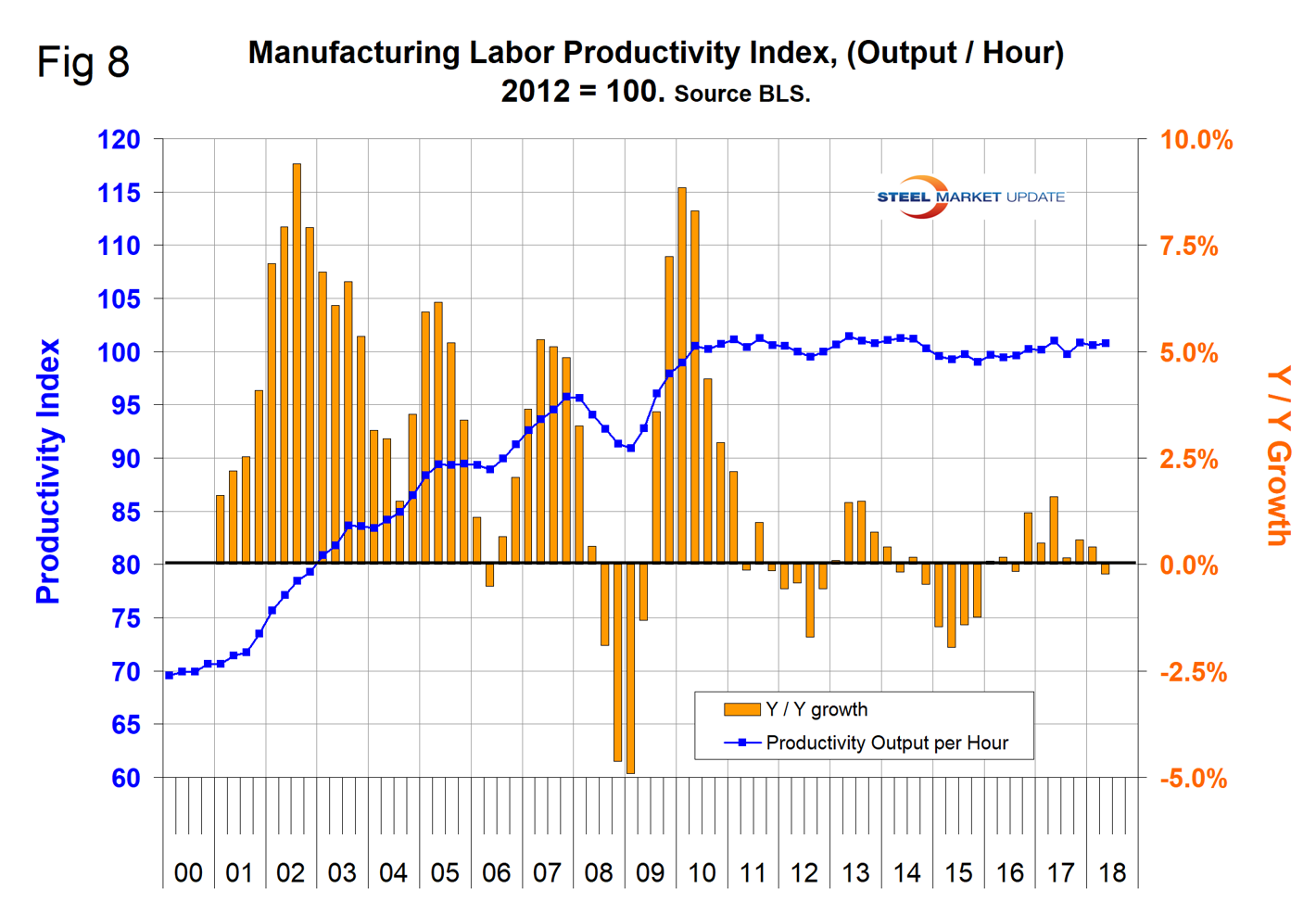
The ISM Manufacturing Index
The Institute for Supply Management’s Manufacturing Index is a diffusion index. ISM states: “Diffusion indexes have the properties of leading indicators and are convenient summary measures showing the prevailing direction of change and the scope of change. An index value above 50 percent indicates that the manufacturing economy is generally expanding; below 50 percent indicates the opposite.” Figure 9 shows the 3MMA of the ISM index from January 1997 through September 2018 with an improving trend since January 2016. In September, the 3MMA of the index was 59.73, well above the 50 percent level that indicates expansion.
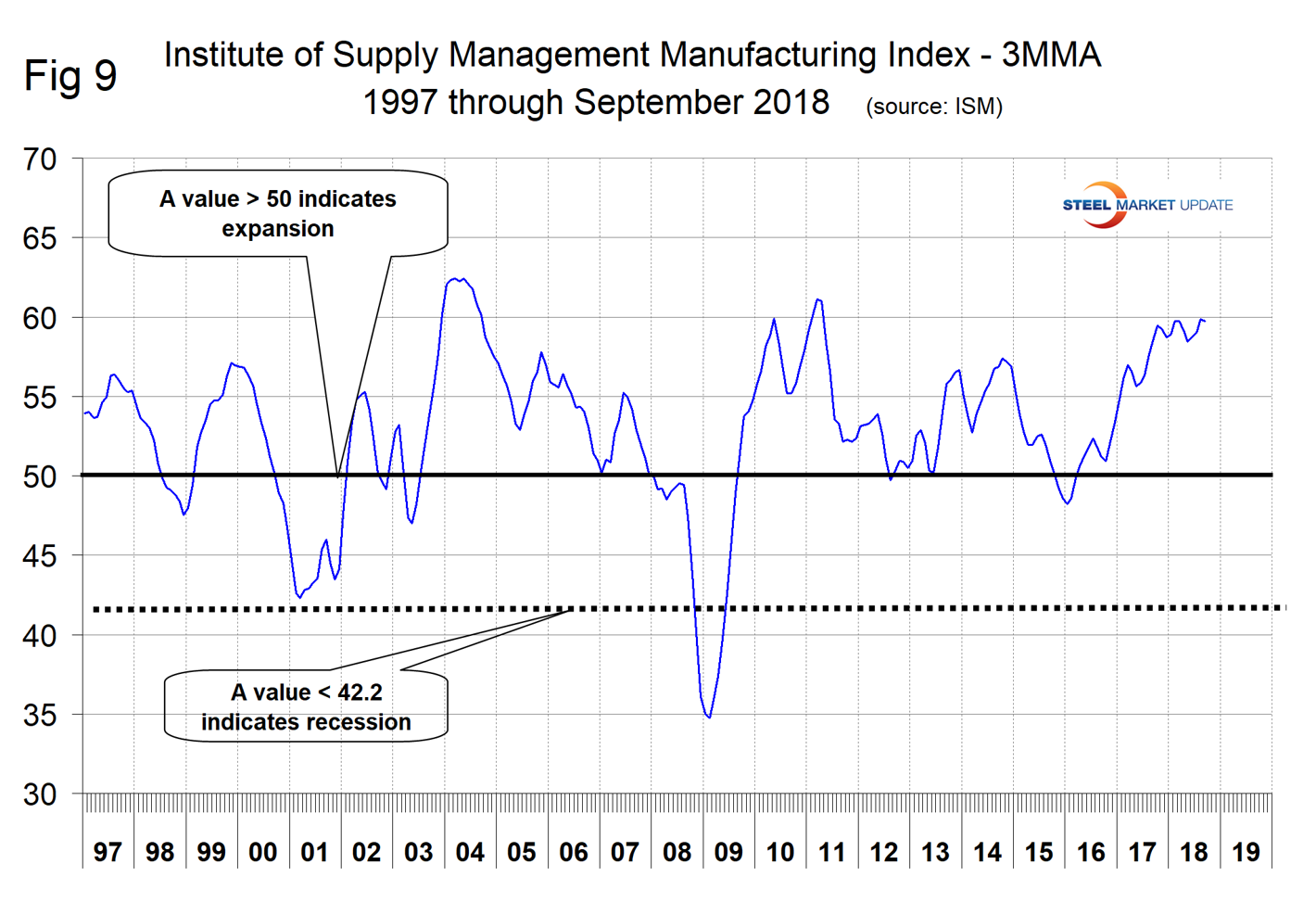
SMU Comment: Manufacturing activity is strong. Figure 10 shows a summary of the 10 indicators that we are currently tracking. Eight of the 10 indicators are trending positive, the exceptions being manufacturing labor productivity and automobile sales.
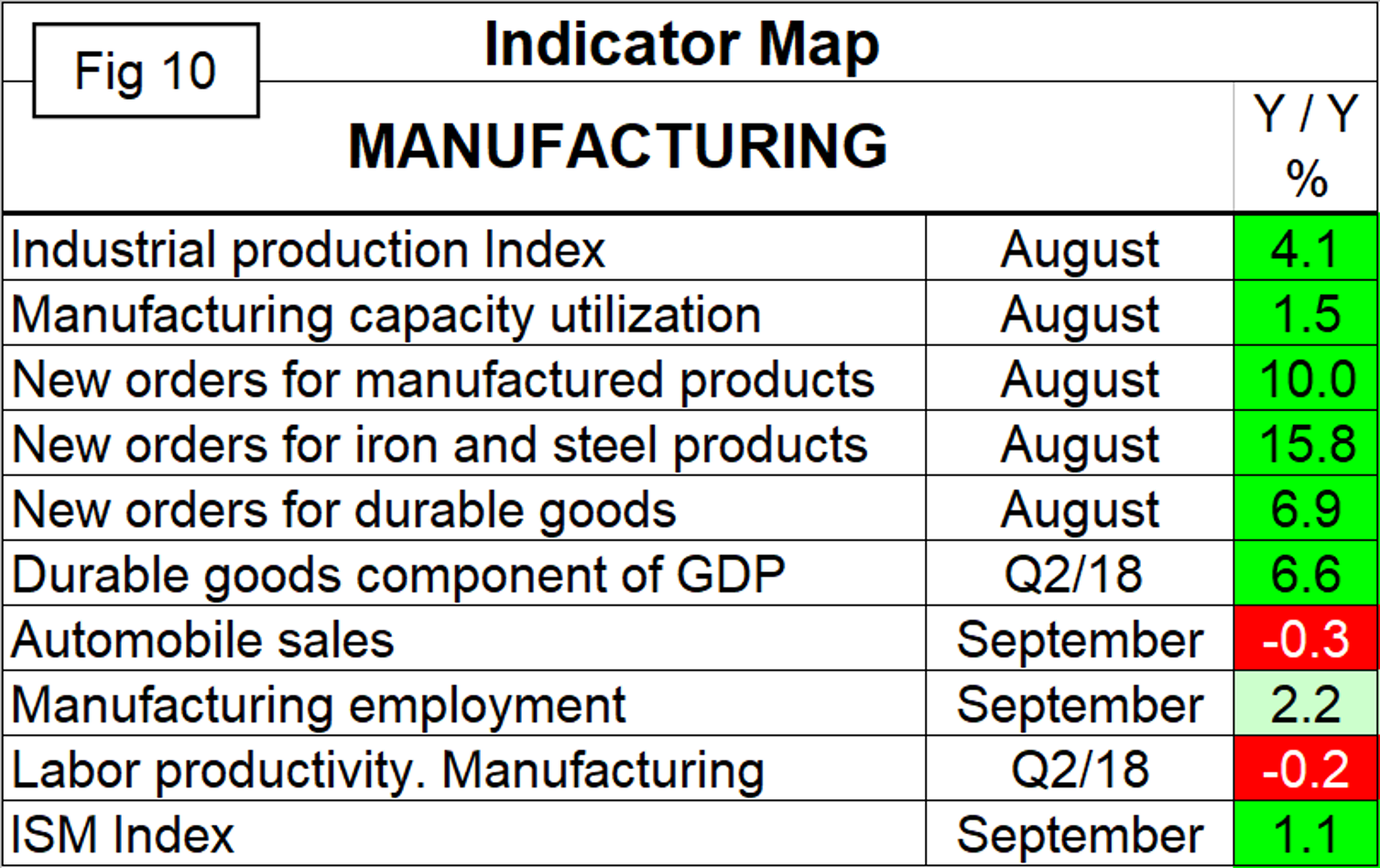

Peter Wright
Read more from Peter WrightLatest in Economy

Steel exports recovered in May but still historically low
US steel exports rose 10% from April to May but remained low compared to recent years. This came just one month after exports fell to the lowest level recorded in nearly five years.

AISI: Raw steel production ticks up near recent high
The volume of raw steel produced by US mills inched higher last week, according to the American Iron and Steel Institute (AISI). After steadily increasing in April and May, domestic mill output stabilized in early June and has remained historically strong since.

Steel groups welcome passage of budget bill
Steel trade groups praised the passage of the Big Beautiful Bill (BBB) in Congress on Thursday.

Industry groups praise Senate for passing tax and budget bill
The Steel Manufacturers Association and the American Iron and Steel Institute applauded the tax provisions included in the Senate's tax and budget reconciliation bill.

Chicago PMI dips 0.1 points in June
The Chicago Purchasing Managers Index (PMI) slipped 0.1 points to 40.4 points, in June.
